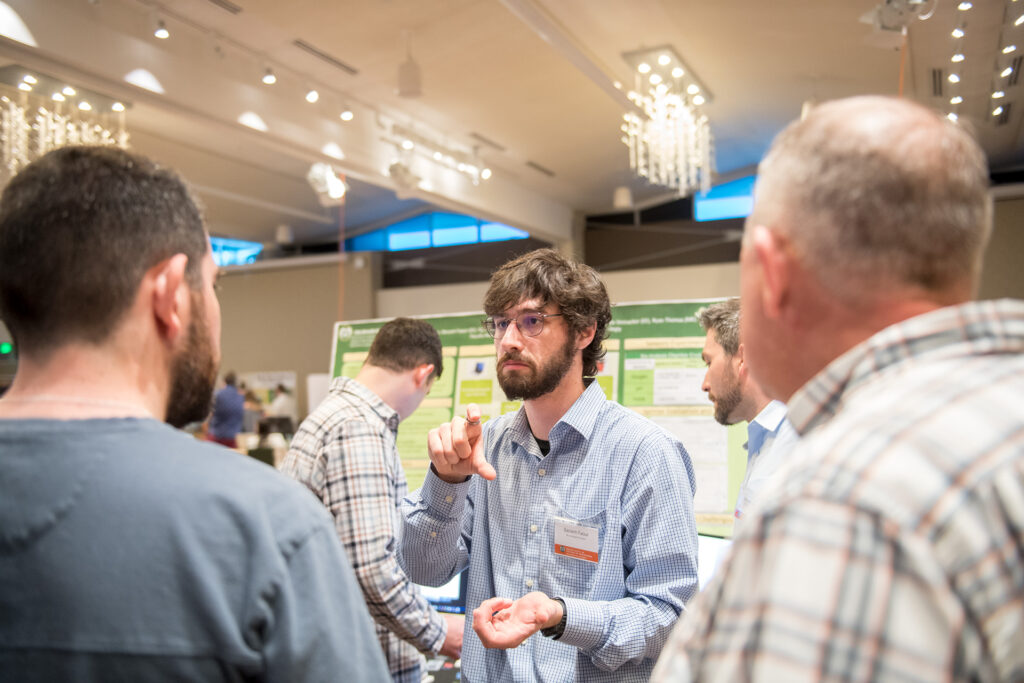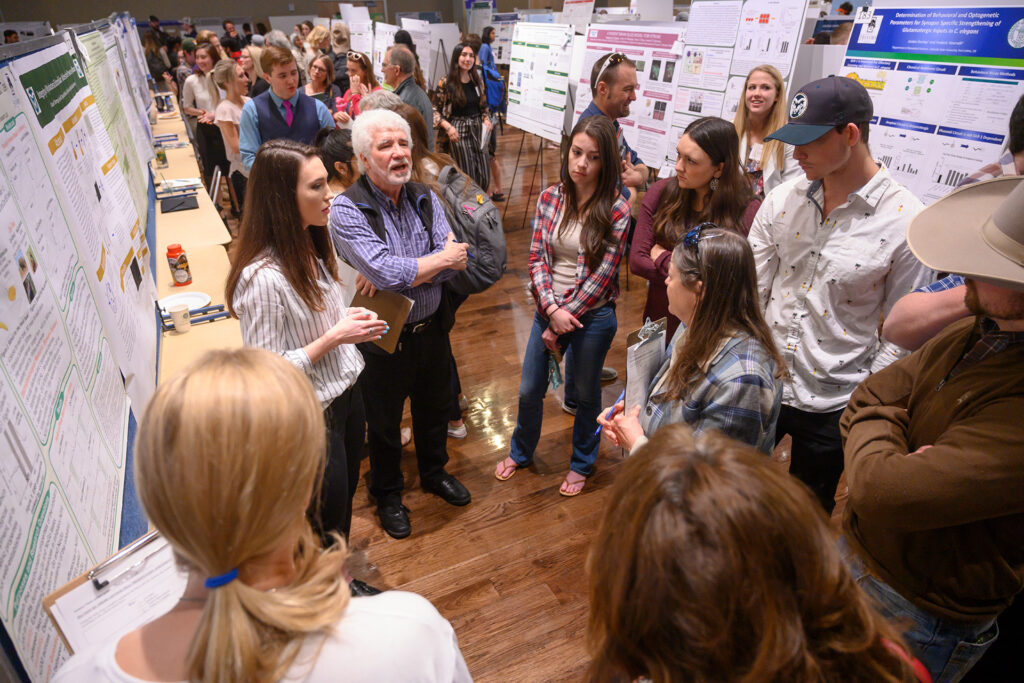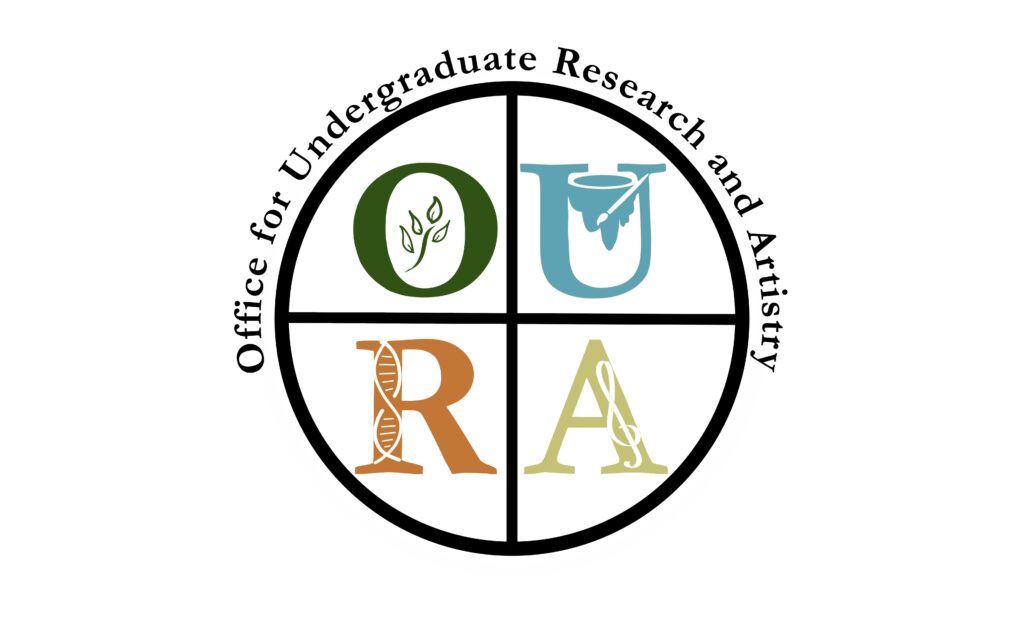What is research? What is artistry?
Research is a systematic inquiry or investigation that makes an original intellectual development in the discipline. When you hear the word “research,” you might think of STEM fields and picture work in a research lab, that results a new understanding of the field, or a new technology or product. That may be common for some fields, but it is not the complete picture of research. In some disciplines, research could include the design and distribution of surveys and analysis of the results to understand the financial marketplace or different social viewpoints. In other fields, research could involve searching through archives and to provide a new interpretation of a text or historical event, perhaps from a previously silenced view.
Artistry is a creative contribution to a discipline that aims at greater understanding of self and the human experience through the lens of that field. Projects in artistry involve synthesizing content from coursework or independent investigations into an end “product” that engages the imagination and emotion of those that experience the work. Some creative inquiry projects are best distributed in print form, but other projects may require visual, auditory, or other sensory engagement with an audience.

Why become involved in research and artistry?
Participation in undergraduate research and artistry gives you the opportunity to make original contributions to disciplinary and interdisciplinary knowledge as a student. In becoming involved, you have a chance to apply your learning from courses to a project with real-world relevancy and applications. You will come to understand your field better by understanding how knowledge in your field is generated. Participation in research and artistry joins you to a network of individuals – peers, staff members, and mentors.
Connections you form with your peers may result in friendships and professional relationships that last a lifetime. If your project is part of a large and collaborative project, you will probably meet other undergraduate students that are working on related pieces. Even if your project is more individual than collaborative, you will still have the opportunity to network with peers at workshops conducted by OURA or other offices and organizations that support undergraduate research and artistry. You will also likely meet peers when you showcase your project’s results at CSU symposiums, or at venues external to CSU (community, regional, national, or even international events).
Participation in research and artistry also connects you to staff members dedicated to expanding the opportunities and quality of undergraduate research and artistry experiences. These people root for your success and guide you along the way. Resources from our office are available to help you connect with a mentor, develop a research question or define a project’s scope, disseminate your work, and more.
Arguably, the most important networking as you conduct a research and artistry project is with your mentor(s). Mentors help guide and focus your work, and they help you develop ways to share your results. They should also become important resources to you professionally in ways beyond your project. Mentors could help you identify coursework related to a goal. They could also support an application for an external scholarships, fellowships or internships. They can help you define your long-term goals and your post-graduate path (eg. graduate programs, professional schools or employment). You might join a faculty mentor’s existing research program (either by inquiring with a course professor if a position is available or answering a “job” posting). You could also add your own “twist” to an existing program or choose to develop a more independent project with mentor guidance. You might work in a facility on CSU’s campus, with an industry partner, or with a local community agency through the integration of a research project into a service-learning experience or internship; some students even work on their own. Finding a mentor for your project is different for everyone, and OURA is here to help.
Who can become involved in research and artistry?
Research is for everyone! Student from all majors can participate! Research and artistry generate new knowledge in every discipline (major) – it just takes different forms. The student testimonials below show a small sample of the diversity of student projects at CSU. Some students find mentors in their field, and some find mentors in different, but related fields where their experience adds a unique skill set to a existing project. Some students even develop interdisciplinary projects and have multiple mentors (including mentors outside CSU). You don’t have to be a junior or senior – nearing graduation. Freshmen and sophomores can participate too! Some students work on one project for several semesters, and some students complete one smaller or several smaller projects (even with different mentors). You do not need a perfect (or Dean’s-list worthy) GPA to participate in research and artistry. You don’t even have to be interested in graduate school, or a research career to benefit from participation. You also don’t have to know what you are interested in researching or creating to get started.
A lot of projects are successful, but even if a project fails to produce predicted results or takes longer than anyone imagined, the experience will expand your skills, knowledge, and professional connections.


